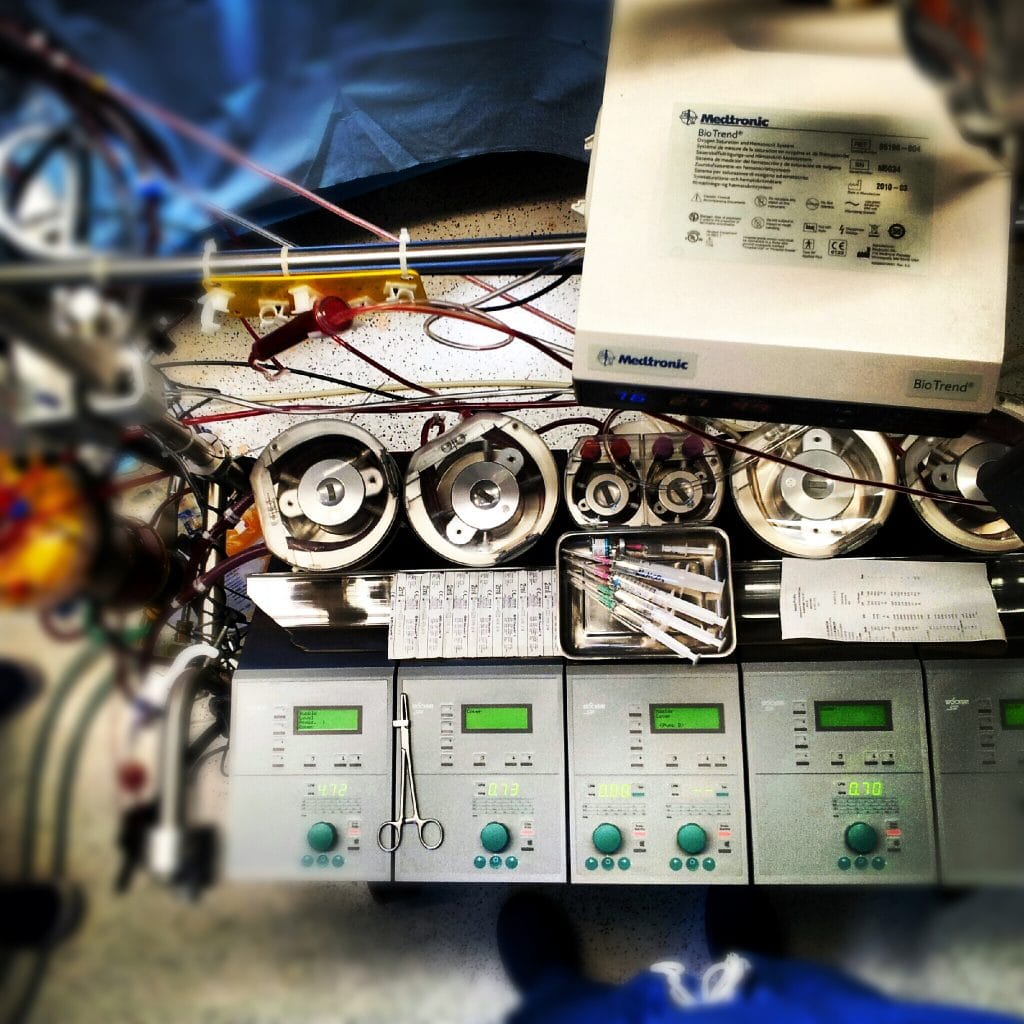Cardiopulmonary Bypass Increases Endothelial Dysfunction After Pulmonary Ischaemia-Reperfusion in An Animal Model.

Objectives
Endothelial dysfunction during ischaemia-reperfusion (IR) is a major cause of primary graft dysfunction during lung transplantation. The routine use of cardiopulmonary bypass (CPB) during lung transplantation remains controversial. However, the contribution of CPB to pulmonary endothelial dysfunction remains unclear. The objective was to investigate the impact of CPB on endothelial dysfunction in a lung IR rat model.
Methods
Rats were allocated to 4 groups: (i) Sham, (ii) IR, (iii) CPB and (iv) IR-CPB. The primary outcome was the study of pulmonary vascular reactivity by wire myograph. We also assessed glycocalyx degradation by enzyme-linked immunosorbent assay and electron microscopy and both systemic and pulmonary inflammation by enzyme-linked immunosorbent assay and immunohistochemistry. Rats were exposed to 45 min of CPB and IR. We used a CPB model allowing femoro-femoral support with left pulmonary hilum ischaemia for IR.
Results
Pulmonary endothelium-dependent relaxation to acetylcholine was markedly reduced in the IR-CPB group (10.7 ± 9.1%) compared to the IR group (50.5 ± 5.2%, P < 0.001), the CPB group (54.1 ± 4.7%, P < 0.001) and the sham group (80.8 ± 6.7%, P < 0.001), suggesting that the association of pulmonary IR and CPB increases endothelial dysfunction. In IR-CPB, IR and CPB groups, vasorelaxation was completely abolished when inhibiting nitric oxide synthase, suggesting that this relaxation process was mainly mediated by nitric oxide. We observed higher syndecan-1 plasma levels in the IR-CPB group in comparison with the other groups, reflecting an increased degradation of glycocalyx. We also observed higher systemic inflammation in the IR-CPB group as shown by the increased plasma levels of IL-1β, IL-10.
Conclusions
CPB significantly increased the IR-mediated effects on pulmonary endothelial dysfunction. Therefore, the use of CPB during lung transplantation could be deleterious, by increasing endothelial dysfunction.
